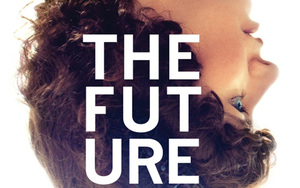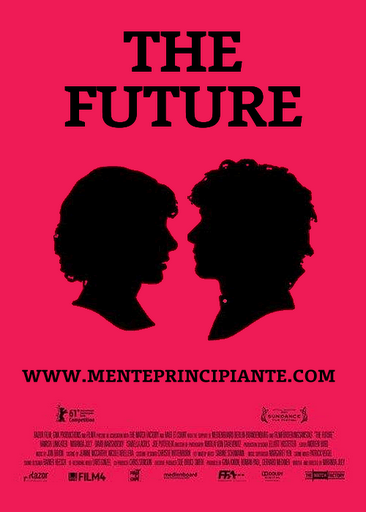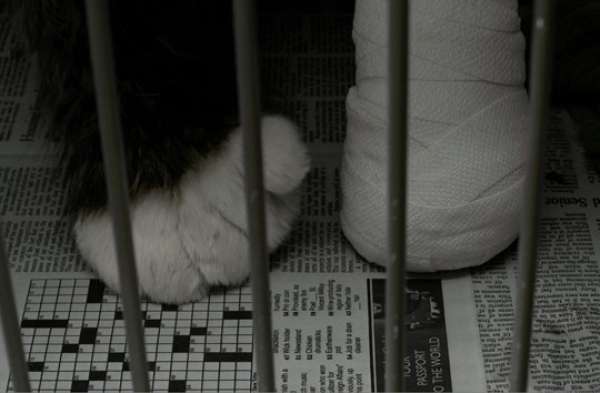

The scene begins with Paw-Paw the cat waiting to be picked up from the adoption centre, asking: “How long is 30 days?” It is not clear who this question is directed at, but since there is no one else within the scene we can only assume that these are Paw-Paw’s internal thoughts.
The only part of the cat ever shown are the paws, and so there are few visual indications of Paw-Paw’s individual identity. Paw-Paw’s voice-over therefore assists in the characterisation of the cat, allowing the audience into his stream of consciousness.The voice of Paw-Paw is high pitched and childlike, representing him as innocent and vulnerable, whilst the name ‘Paw-Paw’ helps to characterise him, as one of his paws is also bandaged up, linking his name to his image. Empathy is created through the portrayal of a vulnerable cat, which is not only kept inside a small cage, but is injured too.
Paw-Paw is highly anthropomorphised, and the paws shown are evidently of a puppet. Using a puppet enables easy manipulation of the paws in order to produce specific actions to accompany the voice-over. For instance, when the cat is considering the length of 30 days, he says “for example”, and simultaneously turns over his paw, similar to how humans might gesture with their hands when speaking.He also says that: “Outside there was no time. Just alive, not alive, or… bird.” Upon saying ‘bird’, he swipes his paw, mimicking the action of catching a bird. Whilst this displays the instinct that Paw-Paw lived by when wild, a real cat would not swipe out as if to catch a bird when no bird is present. Therefore, the swiping action must be for the purposes of the audience as Paw-Paw acknowledges their presence, using this action to accompany his story.

When speaking of getting picked up, Paw-Paw walks forward towards the edge of the cage. The act of walking forward suggests he feels positive about his adoption, and as he becomes closer to the bars of the cage, the space is reduced between Paw-Paw and the outside of the cage, suggesting he is closer to freedom.
The perspective then moves to Paw-Paw’s as he looks outside of his cage, focusing on the clock on the wall opposite. As Paw-Paw focuses on the clock he says he learned to count the seconds. The shot then returns to his paws as he drags his bandaged paw back towards him in a rhythm, each time saying ‘now’ to mark a second.
The scene begins with Paw-Paw’s question about the length of 30 days, and ends as he counts the seconds. The frequent references to time exposes Paw-Paw’s longing to escape his cage as he waits to be picked up. However, every single shot in the scene is shown through the bars of Paw-Paw’s cage, constantly obstructing the frame and the mise-en-scène as a visual reminder of his confinement. Despite feeling optimistic about his adoption, the persistent presence of the bars foreshadow that Paw-Paw will never be picked up, and thus remains waiting, never to escape his cage.
Bibliography
The Future. Dir. Miranda July. Roadside Attractions, 2011
Further reading
Official Website: https://thefuturethefuture.com/